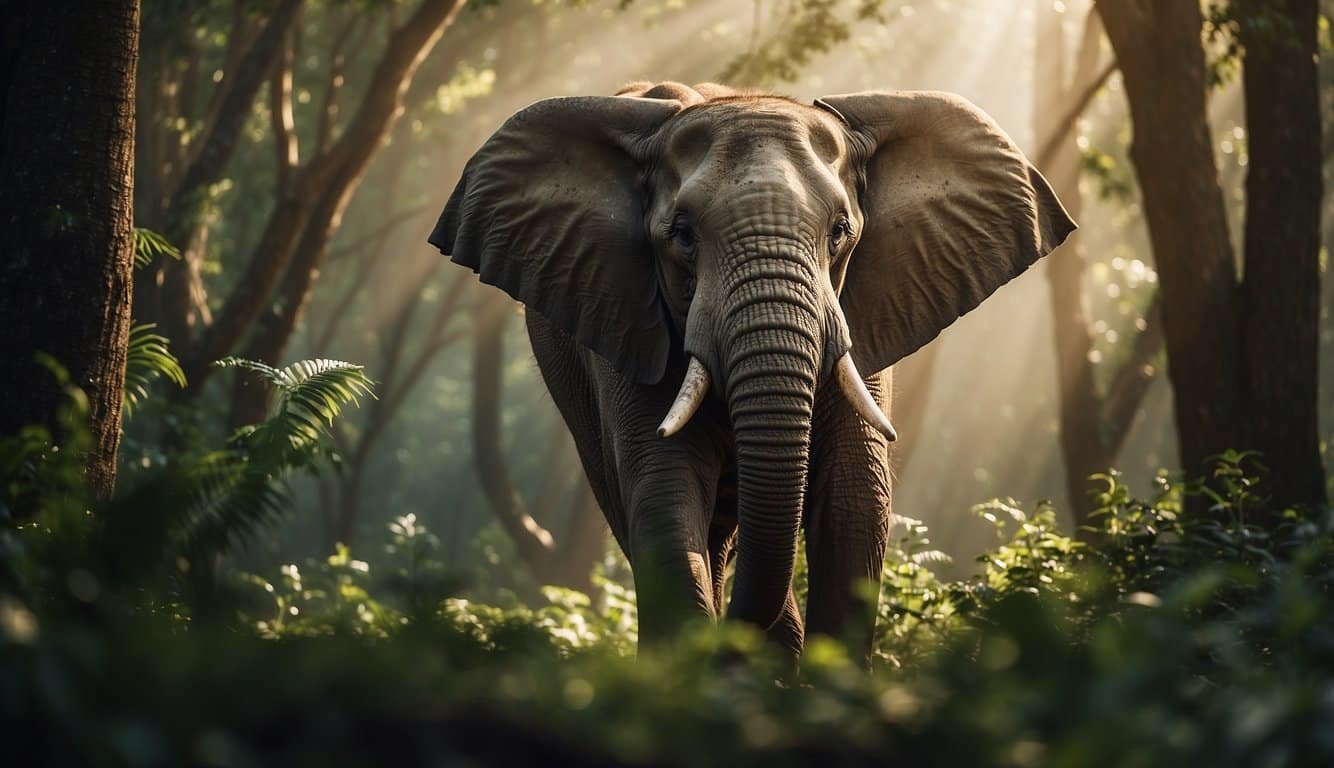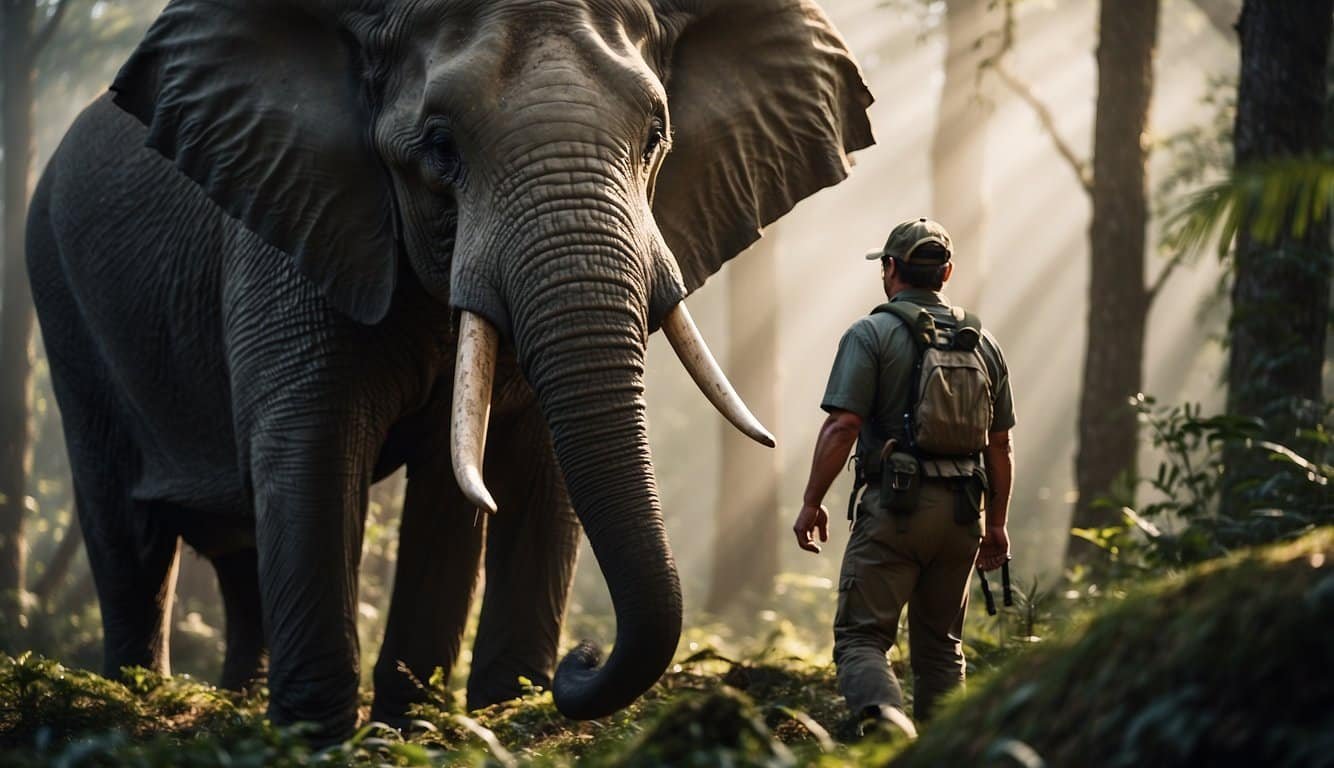Understanding Poaching

Poaching refers to the illegal hunting, capturing, and often killing of wild animals. This act directly contravenes conservation laws and efforts made to protect vulnerable and endangered species. Poaching poses a significant threat to biodiversity. It not only affects targeted species but can also disrupt entire ecosystems.
- Wildlife: Animals from various habitat types worldwide, including forests, savannas, and oceans, are affected by poaching.
- Species: Poaching harms an array of species, not limited to, but often including elephants for their ivory, rhinos for their horns, and tigers for their skins and body parts.
- Animals: Many animals targeted by poachers are part of intricate food webs, and their depletion can have cascading effects on other species.
- Extinction: The relentless pursuit of certain animals for illegal trade contributes to the risk of extinction for some species.
The motives driving poaching are manifold, ranging from economic gain to cultural practices. Despite international efforts to combat wildlife crime, it remains a pressing issue. Conservation groups are tirelessly working to protect endangered species, hoping to curb the tide of illegal hunting that threatens their survival.
The impact of poaching extends beyond individual animals; it’s a part of the larger spectrum of wildlife crime, which includes trafficking and the illegal wildlife trade, deeply rooted in global markets. The struggle against poaching is continuous, and understanding the gravity of this issue is essential for the preservation of our world’s precious biodiversity.
The illegal taking of wildlife has been examined to enhance our understanding of its drivers. Similarly, the effect of poaching on wildlife species has been studied to gauge its impacts. Understanding the social and economic contexts, such as the links between poverty, poaching, and trafficking, can inform better conservation strategies.
Motivations Behind Poaching

Understanding why individuals poach is key to addressing the illicit wildlife trade. Different motivators spur the act of poaching, from financial profit to cultural practices.
For Commercial Gain
One of the most significant drivers behind poaching is the lure of economic benefits. The illegal wildlife trade is fueled by a high demand for items like ivory tusks and rhino horn, which can fetch large sums on the black market. Demand for exotic pets, fur for fashion, and parts for traditional medicine also perpetuates this form of poaching.
For Subsistence and Local Uses
Not all poaching is driven by global markets. Some communities depend on poaching for food and local use, taking fish, meat, and other wildlife products to sustain their livelihood. This pragmatic form of poaching is deeply intertwined with local customs and survival needs.
For Trophy and Sport
Then there’s the pursuit for trophies—the act of hunting game for sport, display, or personal satisfaction. This subset of poachers often seeks rare wildlife, not for sustenance or financial gain, but for the thrill of the hunt and to boast trophies like antlers, heads, or full mounts, which are status symbols in certain circles.
Consequences and Countermeasures

The illegal wildlife trade not only robs us of our natural heritage but also disrupts the balance of ecosystems. As such, understanding the effects on wildlife and the actions taken to curb poaching is vital.
Impact on Wildlife and Ecosystems
The impact of poaching on wildlife is devastating, with several species facing risks that range from dwindling populations to the brink of extinction. Elephants and rhinos are often targeted for their tusks and horns, driven by the high demand in illegal wildlife markets. For example, rhino poaching is fueled by the belief in the medicinal properties of rhino horn, which has no scientific backing. Tigers, lions, and various primates also suffer as their body parts are desired for trophies or traditional medicine. Even less “charismatic” fauna like pangolins—the most trafficked mammals—are not spared, with their scales highly sought after. Reptiles and birds face similar fates, often captured for the pet trade or killed for game. This unsustainable plunder leads to dire consequences for biodiversity and fragile ecosystems.
The depletion of one species can have a cascading effect, disrupting the food chain and affecting other species, including humans. Certain animals, like elephants, are known as “ecosystem engineers” because of their ability to shape their environment, thus supporting other life forms. The loss of these key species can irreparably harm the natural world they help sustain.
Anti-Poaching Efforts and Legal Measures
To combat these threats, anti-poaching efforts by rangers in national parks and wildlife reserves play a frontline role. They are often the first line of defense against poachers, risking their lives to protect these creatures. The fight against poaching also extends to legal measures. Multiple countries have enacted strict laws with severe penalties, including imprisonment, to deter illegal hunting and trafficking.
Conservation groups also work tirelessly to protect wildlife by investing in technology and training to improve the detection of poaching activities. However, corruption can undermine these efforts, making it essential to shore up governance and law enforcement. International laws, such as the Convention on International Trade in Endangered Species of Wild Fauna and Flora (CITES), aim to regulate and monitor the trade in species and their parts, thus reducing the demand for wildlife products.
Wildlife conservation initiatives not only focus on strict law enforcement but also work on reducing demand through education and creating alternative livelihoods for those who might otherwise turn to poaching for economic reasons. Behind the scenes, ongoing research helps to understand the motives behind illegal hunting and the most effective countermeasures to address it. These comprehensive approaches are crucial for the continued survival of endangered species and the overall health of our planet’s ecosystems.

